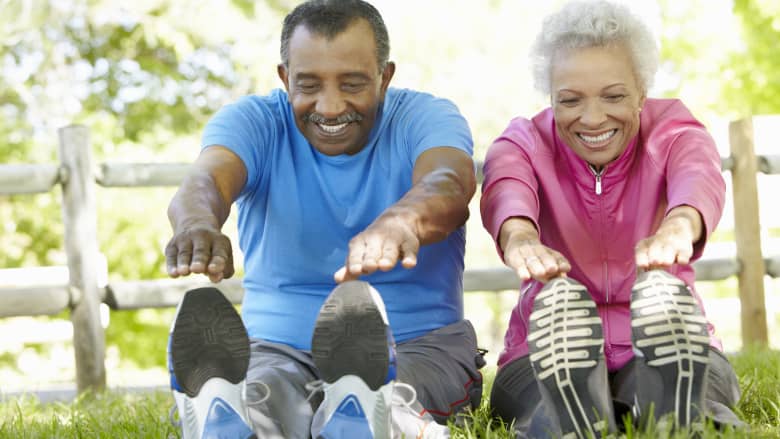If you have been diagnosed with polymyalgia rheumatica (PMR) and are looking for ways to decrease pain without taking additional medication, you have a few options.

An effective PMR treatment program typically includes medications in combination with following a healthy lifestyle. Read Polymyalgia Rheumatica Treatment
1. Simplify daily activities
Use devices that help simplify your daily activities, so you can avoid strenuous joint movement. You can try a:
- Walker/rollator to help you get out of bed and walk around when hips are painful and stiff.
- Long handle bath brush and hair brush to help you avoid repeated bending, raising, and moving arms.
- Rolling laundry cart to carry clothes to and from the laundry room, so you can avoid lifting heavy laundry baskets. If a laundry cart isn’t practical, try using a smaller laundry basket and making multiple trips or doing smaller loads.
- Reaching aid/grabber tool to help you reach the top of your highest kitchen cabinet shelf, grab clothes from the dryer, or even serve as a dressing aid.
See 12 Handy Kitchen Tools for Those with Arthritis
These devices can help you limit your range of motion (especially in the morning hours) when you feel pain and stiffness from PMR.
Other tips to reduce joint pain and fatigue are choosing clothes that do not require you to raise your arms repeatedly, such as buttoned shirts or blouses, or using smaller/lightweight pots and pans while cooking.
2. Engage in physical activities
While it is advisable to use assisting devices to prevent strenuous joint movements, you also don’t want to be sedentary—being sedentary can make PMR stiffness worse. Physical activities and hobbies are a great way to keep you active. Rotating activities can help ensure that different muscles and joints get used but not over-strained.
- Outdoor activities, such as gardening and walking, can keep you active and let you enjoy nice weather.
- Exercise, such as cycling and swimming, can help loosen stiff muscles and joints, while also promoting better bone health, body weight, blood circulation, and sleep.
- Yoga and tai chi can provide flexibility to help improve PMR joint and muscle symptoms. It is important to perform stretches slowly and advance only if you feel comfortable without pain.
See Tai Chi and Yoga for Arthritis
Set practical goals. A good physical activity routine can include 10 minutes of daily exercise, gradually adding 5 minutes every other week. Once you feel you are getting enough exercise and begin to feel better, stick to a regular schedule.
3. Use proven pain-coping strategies
Inflammatory conditions such as PMR can result or flare up from excessive stress.1Tshimologo M, Saunders B, Muller S, et al Patients' views on the causes of their polymyalgia rheumatica: a content analysis of data from the PMR Cohort Study BMJ Open 2017;7:e014301. doi: 10.1136/bmjopen-2016-014301,2Cénac A, Sparfel A, Amiel-lebigre F, et al. [Effect of stressful life events on clinical development of temporal arteritis and/or polymyalgia rheumatica]. Presse Med. 2002;31(1 Here are a few tips to help you focus, calm down, and relax.
- Meditation and relaxation techniques can improve concentration, release feel-good hormones (endorphins), and decrease anxiety and stress. If you don’t like to meditate, try simple breathing exercises, like taking 10 deep, slow breaths in a row.
- Less exertive activities, such as reading, listening to music, crafting, and watching favorite movies and TV shows, can keep your mind off aching joints when you’re fatigued.
- Sharing your feelings with a close friend or loved one can be a great stress reliever and provide comfort on a bad day.
- Getting enough sleep—a minimum of 7 to 9 hours of sleep per night allows your body to rest, heal, and repair.
See 11 Ways to Relieve Pain Naturally
There is no cure-all treatment or best relief strategy for PMR. Effective methods for PMR relief vary from one individual to another. Try one or more of these strategies to see if your PMR pain and stiffness improve over time.
Learn more:
- 1 Tshimologo M, Saunders B, Muller S, et al Patients' views on the causes of their polymyalgia rheumatica: a content analysis of data from the PMR Cohort Study BMJ Open 2017;7:e014301. doi: 10.1136/bmjopen-2016-014301
- 2 Cénac A, Sparfel A, Amiel-lebigre F, et al. [Effect of stressful life events on clinical development of temporal arteritis and/or polymyalgia rheumatica]. Presse Med. 2002;31(1

